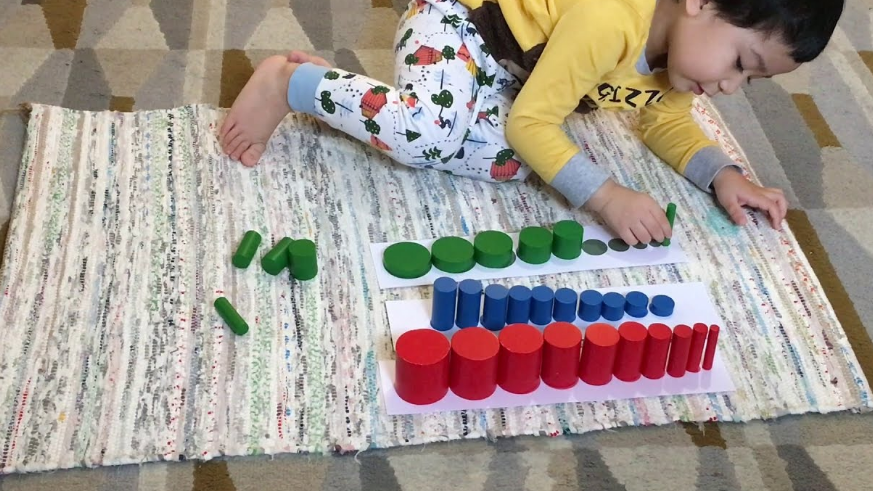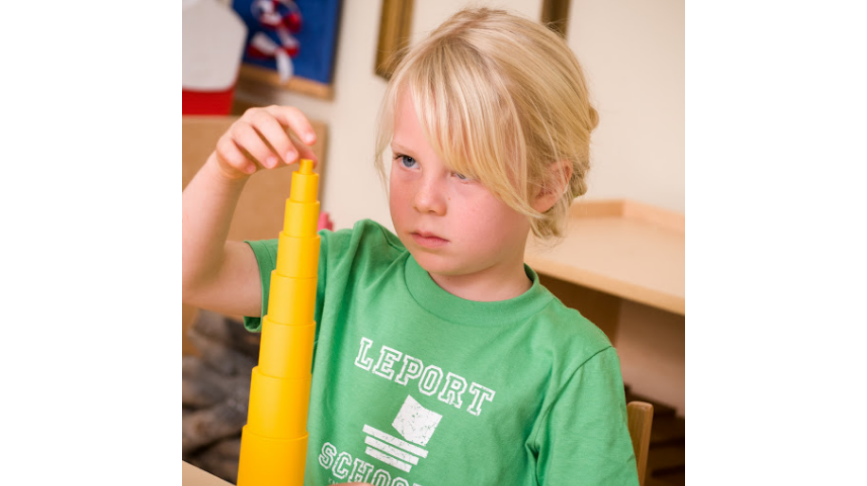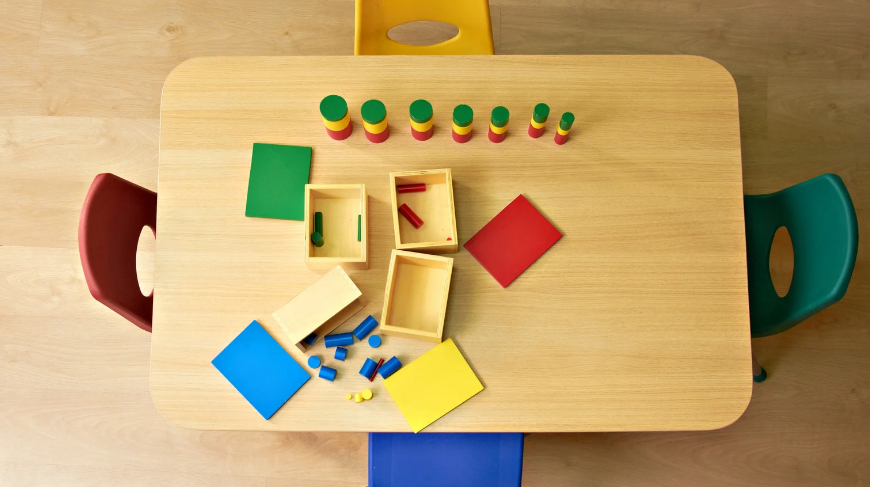Montessori sensorial materials are the best way for children to learn about the world around them. It is recommended that these materials be used at all times during the day because it allows for free-flowing exploration of objects and ideas. The Montessori Knobless Cylinders are a great addition to your child’s store of sensorial materials. You can use it for sensorial exploration, number and letter recognition, and many other things.
In this article, you will learn about the best ideas on how to present the Montessori Knobless Cylinders. You will also learn about what makes these materials so useful for all ages and how to use your set to help your child discover things in a new way.
What are Montessori Knobless Cylinders?
The Knobless Cylinders are Montessori sensorial material that comes in four boxes, each containing ten colored cylinders. Each box has a lid that matches the cylinders’ color: blue, yellow, green, and red.
Cylinders differ methodically in one or two dimensions; height and diameter.
- Red Cylinders decrease in diameter, but height stays constant
- Yellow Cylinders decrease in both diameter and height
- Green Cylinders decrease in diameter and increase in height
- Blue Cylinders decrease in height, and diameter stays the same
By working with the Knobless Cylinders, kids are also introduced to the grading language mentioned below:
- tall, taller, tallest
- short, shorter, shortest
- thick, thick, thickest
- thin, thinner, thinnest
Montessori Knobless Cylinders: The Benefits
The purpose of this Montessori Sensorial material is to help refine a kid’s visual discrimination, specifically that of diameter and height. You can also use it to develop your child’s fine motor movements and hand-eye coordination.
Control of error:
(a) visual – children develop a sense of relative size; they learn to distinguish between different sizes.
(b) hand – children learn to grasp objects at all levels of width and height
What Age Can You Introduce the Montessori Knobless Cylinders?

The Montessori Knobless Cylinders can be introduced to children 2 or 3 years old, assuming there is no age-related readiness for the cylinder materials. You can introduce the material as early as possible. However, if the child is not receptive, do not force them to use the materials. Instead, wait until they are ready to begin using the materials. It is recommended that you watch your child explore these materials and see if there is anything you can do to make it more interesting for them. You can also use this Montessori sensorial material with older children; however, you need to be careful that the height or width of the cylinders does not pose a choking hazard for your children. You should always supervise when your older children are playing with these materials.
Best Ideas On How to Present the Montessori Knobless Cylinders:
There are many ways to present the Montessori Knobless Cylinders to your children. Here are some ideas on how to make it more interesting for them.
- Ask your little one to carry the box of red Knobless Cylinders to the table. Carefully remove the cylinders, grasping them over the top with your hand using the pincer grip. Show your kids how to grade the cylinders from thickest to thinnest in a horizontal line. Ask your kids to grade the cylinders as well. This way, you can introduce them to the grading language mentioned above.
- You can also have your child do the same activity by carrying the blue box of Knobless Cylinders. In this case, your child will grade the cylinders from shortest to tallest in a vertical line.
- When it’s time to end the activity, ask your kid that the cylinder must be put back in the box, the tallest cylinder first.
The following are some activities your child can do to play with the Montessori Knobless Cylinders.
1. Standing Tower

To do this activity, have your child place the yellow box on a tabletop. Then, encourage them to take the cylinders out of the box and arrange them in a line on the tabletop. Next, have your kids stack the cylinders one at a time until they have created a tower. This will be a good way to practice their fine motor skills and
2. Matching different sets of Montessori Knobless Cylinders
Set out all four boxes of Knobless Cylinders and encourage your kid to stack cylinders with the same diameter. This will help your kid in developing their visual discrimination skills.
3. Make Shapes
Using all the four boxes of Montessori Knobless Cylinders, have your children make shapes such as diamonds or squares. Their aim is to fill up the space on the table with cylinders of a particular shape. This will help them to develop their hand-eye coordination and control over error.
4. Number Recognition
Using the four boxes of Knobless Cylinders, you can ask your kids to count the number in each box. When they have finished counting, ask them if they can tell how many cylinders are in each box. This will help them develop their ability to count and see patterns in numbers.
5. Variety Activity

Once you have organized the four boxes, ask your kids to create other combinations such as yellow cylinders with blue cylinders, red cylinders with green cylinders, and green cylinders with blue cylinders.
6. Stereognostic Activities
Put a set of knobless cylinders in a cloth bag and ask kid one to feel out the cylinders and see if they can identify them. Invite your child to perform the activity blindfolded. The aim is to develop your child’s sense of touch and tactile discrimination.
Final Thoughts
The Montessori Knobless Cylinders Sensorial Materials are a great tool to use in your child’s sensory development. Also, the Montessori Knobless Cylinders are good to use with kids of all ages.
Having this type of sensorial material in your child’s playroom is vital to make them comfortable with the materials and learn to use them. The main objective is to make your child’s play more challenging, creative, and engaging. These Sensorial materials are easy to clean and store away until the child is ready to explore them again.
Here at Montessori Academy, we emphasize the importance of Sensorial Education materials in the early childhood development of our children. We focus on how children learn from their surroundings and develop their senses in order for them to be more involved and engaged in activities. We also make sure that the materials are safe for the kids, added with a lot of fun. If you want to see how we do it, call us at (310) 215 -3388 for Culver City and (323) 795-0200 for West Adams to find out more about how you can enrich your child’s early learning experience with Montessori Academy.

